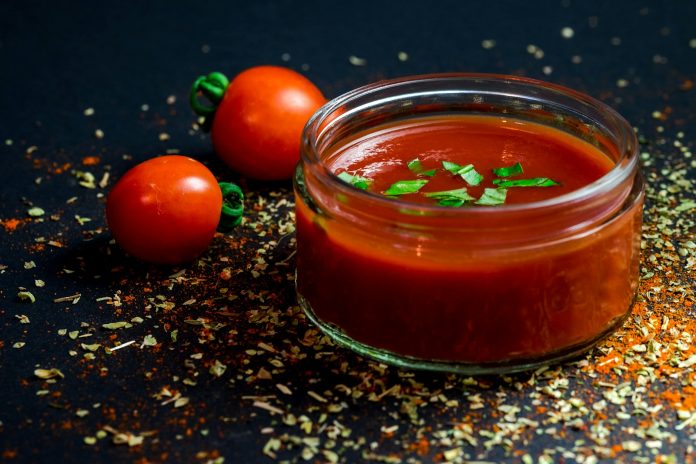Introduction
In the ever-evolving world of culinary trends, certain flavors and ingredients periodically take center stage. One such trend that has recently gained attention is the “sauer condiment nyt,” a tangy, flavorful addition to various dishes. The New York Times (NYT) highlighted this rising star in the culinary scene, noting its growing popularity among chefs and food enthusiasts alike. But what exactly is sauer condiment, and why is it capturing the interest of so many? In this article, we will explore the origins, uses, and health benefits of sauer condiment, along with tips on how to incorporate it into your everyday meals.
What is Sauer Condiment nyt?
Definition and Origins
Sauer condiment nyt refers to a category of tangy, acidic condiments that add a sharp, piquant flavor to dishes. The term “sauer” comes from the German word for “sour,” which accurately describes the flavor profile of these condiments. While the concept of sauer condiments is not new, their rise in popularity is part of a broader trend towards bolder, more complex flavors in cooking.
These condiments often contain fermented ingredients, vinegar, or citrus, which contribute to their distinct sour taste. Common examples include sauerkraut, kimchi, pickled vegetables, and various types of vinegar-based sauces. The use of sauer condiment nyt has deep roots in many culinary traditions, particularly in European and Asian cuisines, where the balance of sour, sweet, salty, and bitter flavors is essential.
Historical Background
Before refrigeration, people relied on fermentation and pickling to extend the shelf life of food. The tangy, acidic flavors that resulted from these processes became a staple in many diets, appreciated not just for their longevity but also for their taste.
In European cuisine, sauerkraut, made from fermented cabbage, is a well-known sauer condiment nyt with a history dating back over 2,000 years. Similarly, in Asia, kimchi, a spicy fermented cabbage dish, has been a cornerstone of Korean cuisine for centuries.
Why Sauer Condiments Are Trending
Flavor Complexity
One of the main reasons sauer condiments are trending is their ability to add complexity to dishes. In an era where food enthusiasts are constantly seeking new and exciting flavors, sauer condiment nyt offer a way to elevate ordinary meals. The sharpness of the sour flavor can enhance the taste of meats, vegetables, and grains, providing a refreshing contrast that awakens the palate.
Health Benefits
The health benefits associated with sauer condiment nyt also contribute to their rising popularity. Many of these condiments, particularly those that are fermented, are rich in probiotics, which support gut health. Probiotics are live bacteria that are beneficial for the digestive system, helping to maintain a healthy balance of gut flora. Regular consumption of probiotic-rich foods can improve digestion, boost the immune system, and even promote mental health.
In addition to probiotics, sauer condiments often contain vitamins and minerals that are essential for overall health. For example, sauerkraut is high in vitamin C and K, while kimchi is a good source of fiber, vitamin A, and iron. The acidic nature of these condiments also helps to enhance the absorption of nutrients from other foods, making them a valuable addition to a balanced diet.
Culinary Versatility
Another reason for the popularity of sauer condiment nyt is their versatility in the kitchen. These condiments can be used in a variety of ways, from adding a tangy kick to sandwiches and salads to serving as a flavorful accompaniment to grilled meats. Their bold flavor can transform simple dishes into gourmet experiences, making them a favorite among chefs and home cooks alike.
Popular Types of Sauer Condiment nyt
Sauerkraut
Sauerkraut is one of the most well-known sauer condiments. It is made from finely shredded cabbage that is fermented by lactic acid bacteria. This fermentation process gives sauerkraut its distinctive sour flavor and crunchy texture. Traditionally served with sausages, pork, or potatoes, sauerkraut is also a great addition to sandwiches, salads, and even soups.
Pickled Vegetables
Pickled vegetables, such as cucumbers, carrots, and beets, are another popular form of sauer condiment nyt. These vegetables are preserved in a vinegar or brine solution, which imparts a tangy flavor. Pickled vegetables are incredibly versatile and can be used to add a sour note to sandwiches, tacos, or as part of a charcuterie board.
Vinegar-Based Sauces
Vinegar-based sauces, such as chimichurri, balsamic glaze, and hot sauce, also fall under the category of sauer condiments. These sauces often combine the acidity of vinegar with herbs, spices, and sometimes a touch of sweetness, creating a well-rounded flavor profile. They can be drizzled over meats, salads, and roasted vegetables to add a tangy depth.
How to Incorporate Sauer Condiments into Your Meals
Adding Depth to Salads
Salads are a great canvas for sauer condiment nyt. Adding pickled vegetables or a vinegar-based dressing can elevate a simple salad into something special. For instance, a basic green salad can be transformed with the addition of pickled red onions, a drizzle of balsamic glaze, and a sprinkle of crumbled cheese. The acidity of the condiments brightens the flavors of the vegetables, making the salad more vibrant and enjoyable.
Using as a Condiment or Topping
Sauer condiments also shine when used as toppings or condiments. A dollop of sauerkraut on a sandwich or burger can add a tangy crunch, while a spoonful of kimchi can bring a spicy kick to tacos or rice bowls. These condiments can also be used as a garnish for soups, stews, and grain bowls, adding both flavor and visual appeal.
Experimenting with Fusion Dishes
For those who love to experiment in the kitchen, sauer condiments offer endless possibilities for fusion dishes. Try incorporating kimchi into a grilled cheese sandwich for a spicy twist, or add pickled vegetables to a sushi roll for a unique flavor combination. The bold flavors of these condiments can complement a wide range of cuisines, from Asian to European to Latin American.
Health Benefits of Sauer Condiments
Probiotics and Gut Health
As mentioned earlier, many sauer condiment nyt are rich in probiotics, which are beneficial for gut health. A healthy gut microbiome is essential for digestion, immune function, and even mental health. By regularly consuming probiotic-rich foods like sauerkraut and kimchi, you can help maintain a balanced gut flora and support overall well-being.
Nutrient Absorption
The acidic nature of sauer condiment nyt can also enhance the absorption of nutrients from other foods. For example, the vitamin C in sauerkraut can improve the absorption of iron from plant-based foods, making it a valuable addition to vegetarian and vegan diets. Additionally, the fermentation process can increase the bioavailability of certain nutrients, making them easier for the body to absorb.
Antioxidant Properties
Many sauer condiments, particularly those made from vegetables, are rich in antioxidants. Antioxidants are compounds that protect the body from damage caused by free radicals, which can contribute to chronic diseases and aging. By incorporating sauer condiments into your diet, you can boost your intake of these protective compounds and support overall health.
Weight Management
Sauer condiment nyt can also be beneficial for weight management. The bold flavors of these condiments can help satisfy cravings and add flavor to low-calorie dishes, making it easier to stick to a healthy eating plan. Additionally, the fiber content in fermented vegetables like sauerkraut and kimchi can promote satiety, helping you feel fuller for longer.
Sauer Condiment nyt in Popular Culture
The New York Times Spotlight
The New York Times has played a significant role in bringing attention to the rise of sauer condiments. Through articles and features, they have highlighted the growing popularity of these tangy, fermented foods, and their benefits. The NYT’s coverage has helped to elevate sauer condiments from niche items to mainstream culinary staples, embraced by chefs and home cooks alike.
Kimchi’s Global Appeal
Kimchi has also become a global sensation, appearing on menus in restaurants around the world. Its unique combination of spiciness, tanginess, and umami makes it a versatile ingredient that can enhance a wide range of dishes. The global appeal of kimchi is a testament to the growing interest in bold, complex flavors and the cultural exchange of culinary traditions.
Making Sauer Condiment nyt at Home
Basic Sauerkraut Recipe
Making sauerkraut at home is surprisingly simple and requires just a few ingredients: cabbage, salt, and time. Here’s a basic recipe to get you started:
- Prepare the Cabbage: Start by shredding a medium-sized cabbage into thin strips.
- Salt the Cabbage: Place the shredded cabbage in a large bowl and sprinkle it with salt (about 1 tablespoon per head of cabbage). Massage the cabbage with your hands until it begins to release liquid.
- Pack the Cabbage: Pack the salted cabbage tightly into a clean glass jar, pressing down to remove any air pockets. The cabbage should be submerged in its own liquid.
- Ferment: Cover the jar with a clean cloth and let it sit at room temperature for 1-3 weeks. Check the sauerkraut daily, pressing it down to keep it submerged in liquid. The longer it ferments, the tangier it will become.
- Store: Once the sauerkraut reaches your desired level of sourness, transfer it to the refrigerator, where it will keep for several months.
Simple Pickled Vegetables
Pickled vegetables are another easy-to-make sauer condiment. Here’s a basic recipe:
- Prepare the Vegetables: Choose vegetables such as cucumbers, carrots, or radishes, and slice them into thin strips or rounds.
- Make the Brine: In a saucepan, combine 1 cup of vinegar, 1 cup of water, 1 tablespoon of sugar, and 1 tablespoon of salt. Heat until the sugar and salt dissolve.
- Add Flavors: To the brine, add spices and herbs of your choice, such as garlic, dill, or mustard seeds.
- Pickle the Vegetables: Place the vegetables in a clean glass jar and pour the hot brine over them, making sure they are fully submerged.
- Cool and Store: Let the jar cool to room temperature before sealing it with a lid and refrigerating. The pickles will be ready to eat in about 24 hours and will keep for several weeks.
Conclusion
Sauer condiment nyt, with their bold flavors and numerous health benefits, have earned their place in the spotlight as a rising culinary trend. From the tangy crunch of sauerkraut to the spicy kick of kimchi, these condiments offer a versatile and delicious way to enhance your meals. Whether you’re a seasoned chef or a home cook, incorporating sauer condiments into your diet is a great way to add complexity to your dishes while reaping the rewards of probiotic-rich, nutrient-dense foods. With their growing popularity, as highlighted by The New York Times, it’s clear that sauer condiments are more than just a passing fad—they’re here to stay.



